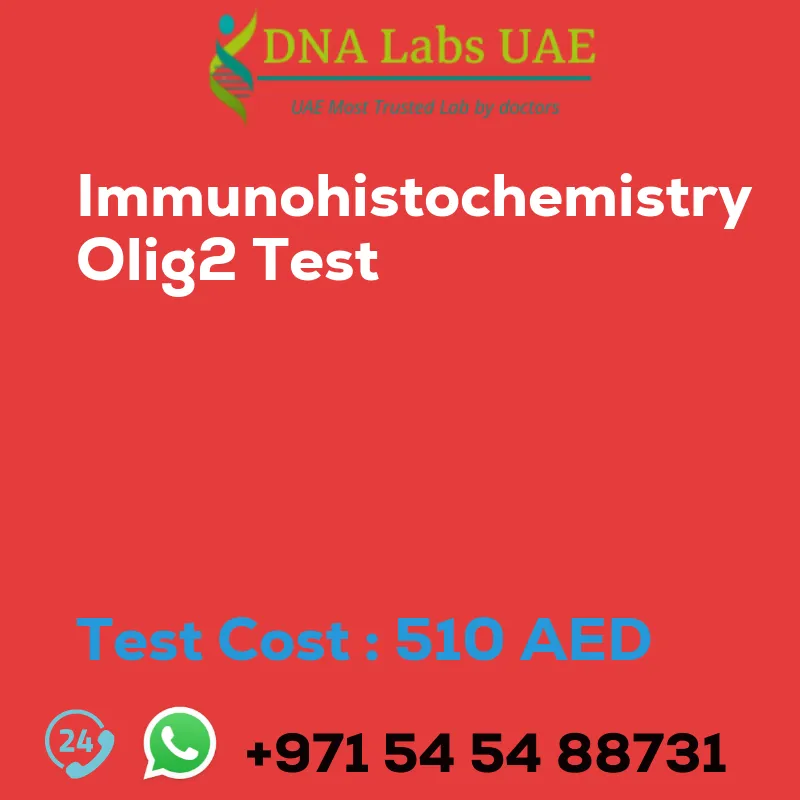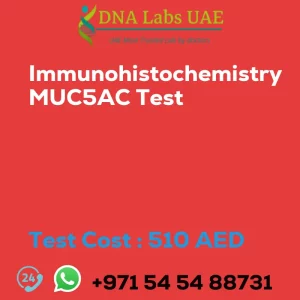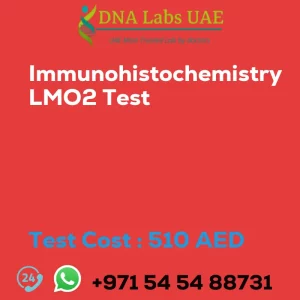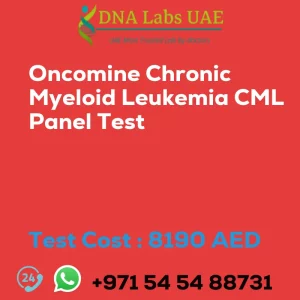IMMUNOHISTOCHEMISTRY OLIG2 Test
Test Name: IMMUNOHISTOCHEMISTRY OLIG2 Test
Components: Olig2 protein expression detection
Price: 510.0 AED
Sample Condition: Submit tumor tissue in 10% Formal-saline OR Formalin fixed paraffin embedded block. Ship at room temperature. Provide a copy of the Histopathology report, Site of biopsy and Clinical history.
Report Delivery: Sample Daily by 6 pm; Report Block: 5 days Tissue Biopsy: 5 days Tissue large complex: 7 days
Method: Immunohistochemistry
Test Type: Cancer
Doctor: Oncologist
Test Department: HISTOLOGY
Pre Test Information: Provide a copy of the Histopathology report, Site of biopsy and Clinical history.
Test Details
The Olig2 test is an immunohistochemistry (IHC) test that is used to detect the expression of the Oligodendrocyte transcription factor 2 (Olig2) protein in tissue samples. Olig2 is a transcription factor that plays a crucial role in the development and differentiation of oligodendrocytes, which are a type of glial cells in the central nervous system.
The Olig2 test is commonly used in the diagnosis and classification of brain tumors, particularly gliomas. Gliomas are a type of tumor that arise from glial cells, and the expression of Olig2 can help differentiate between different types of gliomas. For example, Olig2 is highly expressed in oligodendrogliomas, a specific subtype of glioma, while its expression is relatively low in other glioma subtypes such as astrocytomas.
To perform the Olig2 test, tissue samples are collected from the patient, typically through a biopsy or surgical resection. The tissue samples are then fixed, embedded in paraffin, and sectioned onto slides. These tissue sections are then subjected to the IHC staining procedure.
In the IHC staining procedure, the tissue sections are first deparaffinized and rehydrated. Then, they are incubated with a primary antibody specific to Olig2. The primary antibody binds to the Olig2 protein if it is present in the tissue. After washing off the excess primary antibody, a secondary antibody is applied. This secondary antibody is conjugated with a chromogen or fluorophore that allows for visualization of the Olig2 protein.
The stained tissue sections are then examined under a microscope to assess the expression of Olig2. The Olig2 test can provide valuable information for the diagnosis, prognosis, and treatment planning of brain tumors. It can help differentiate between different glioma subtypes, which can have different clinical behaviors and treatment responses.
Additionally, the Olig2 test can also be used to monitor the effectiveness of certain targeted therapies that specifically target Olig2-expressing cells. Overall, the Olig2 test is a valuable tool in neuropathology and neuro-oncology, providing important information about the presence and distribution of Olig2 protein in tissue samples.
| Test Name | IMMUNOHISTOCHEMISTRY OLIG2 Test |
|---|---|
| Components | |
| Price | 510.0 AED |
| Sample Condition | Submit tumor tissue in 10% Formal-saline OR Formalin fixed paraffin embedded block. Ship at room temperature. Provide a copy of the Histopathology report, Site of biopsy and Clinical history. |
| Report Delivery | Sample Daily by 6 pm; Report Block: 5 days Tissue Biopsy: 5 days Tissue large complex : 7 days |
| Method | Immunohistochemistry |
| Test type | Cancer |
| Doctor | Oncologist |
| Test Department: | HISTOLOGY |
| Pre Test Information | Provide a copy of the Histopathology report, Site of biopsy and Clinical history. |
| Test Details |
The Olig2 test is an immunohistochemistry (IHC) test that is used to detect the expression of the Oligodendrocyte transcription factor 2 (Olig2) protein in tissue samples. Olig2 is a transcription factor that plays a crucial role in the development and differentiation of oligodendrocytes, which are a type of glial cells in the central nervous system. The Olig2 test is commonly used in the diagnosis and classification of brain tumors, particularly gliomas. Gliomas are a type of tumor that arise from glial cells, and the expression of Olig2 can help differentiate between different types of gliomas. For example, Olig2 is highly expressed in oligodendrogliomas, a specific subtype of glioma, while its expression is relatively low in other glioma subtypes such as astrocytomas. To perform the Olig2 test, tissue samples are collected from the patient, typically through a biopsy or surgical resection. The tissue samples are then fixed, embedded in paraffin, and sectioned onto slides. These tissue sections are then subjected to the IHC staining procedure. In the IHC staining procedure, the tissue sections are first deparaffinized and rehydrated. Then, they are incubated with a primary antibody specific to Olig2. The primary antibody binds to the Olig2 protein if it is present in the tissue. After washing off the excess primary antibody, a secondary antibody is applied. This secondary antibody is conjugated with a chromogen or fluorophore that allows for visualization of the Olig2 protein. The stained tissue sections are then examined under a microscope to assess the expression of Olig2. The Olig2 test can provide valuable information for the diagnosis, prognosis, and treatment planning of brain tumors. It can help differentiate between different glioma subtypes, which can have different clinical behaviors and treatment responses. Additionally, the Olig2 test can also be used to monitor the effectiveness of certain targeted therapies that specifically target Olig2-expressing cells. Overall, the Olig2 test is a valuable tool in neuropathology and neuro-oncology, providing important information about the presence and distribution of Olig2 protein in tissue samples. |








